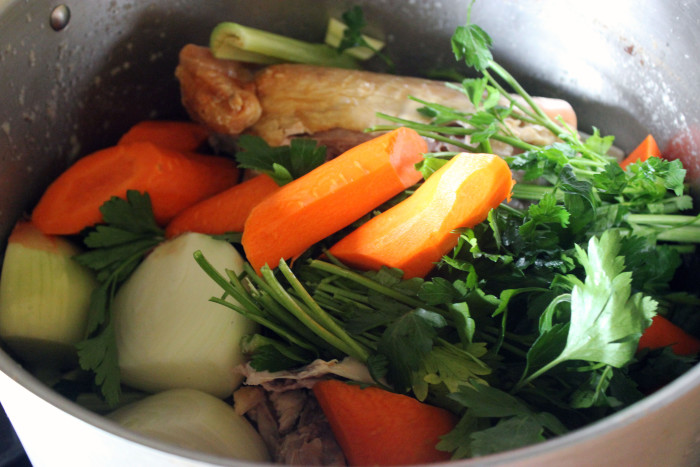It is November and it is time to plan for Thanksgiving. That turkey on your table? It’s a treasure chest. Use the carcass to make a very rich broth, then used the broth in gravy or risotto or soup. I’ll post a recipe for Turkey Soup with Root Vegetables and Wild Rice just before Thanksgiving. It’s a great Sunday-After-Thanksgiving dish.
This recipe is from the new book Broths & Stocks by Jennifer McGruther of The Nourished Kitchen. She a broth and stock maven. This is just the recipe you mom or grandmother or great grandmother used.
Enjoy your Thanksgiving meal. But, as the night ends, please don’t toss away the turkey bones. Keep ‘em and the next day, just cook away. Do this once, and it will become a Thanksgiving tradition as richly savored as the pumpkin pie.
Roasted Turkey Bone Broth
Yield: about 4 quarts
Ingredients:
- The spent frame of 1 roasted turkey
- 4 carrots, sliced 1 inch thick
- 6 celery stalks, sliced 1 inch thick
- 1 large yellow onion, quartered and unpeeled
- 2 bay leaves
- Parsley if you wish
- 1 tablespoon whole black peppercorns
- ½ cup dry white wine
- 4-6 quarts cold water
Preparation:
Place the turkey bones into a large stockpot and then add the carrots and celery. Arrange the onion in the pot with the turkey bones and vegetables. Toss in the bay leaves and peppercorns and then pour in the wine and water. Bring it all to a boil over medium-high heat, and then immediately lower the heat to medium-low and simmer, covered, for at least 14 and up to 24 hours, until the bones crumble when crushed. Skim off and discard any foam that rises to the top of the stockpot as necessary.
Strain the broth through a fine-mesh sieve, and then use a wide mouthed funnel to pour it into four 1-quart jars, sealing their lids tightly. Cook with the broth right away or store it in the refrigerator for up to 1 week. Alternatively, you can freeze the broth for up to 6 months, making sure to allow plenty of headspace if you're using glass jars.
When you’re ready to serve the broth, you’ll notice a thin layer of semisolid yellow fat at the top of the jar. Spoon off the fat, which you can reserve and use to sauté or roast vegetables, or discard it, then use the broth as a base gravy, soups or whatever will please your palette.

